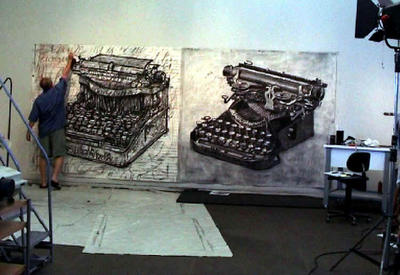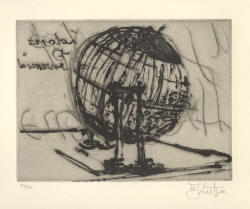The book arts...Yikes.
Just like printmaking, or ceramics, or really any medium, once you get sucked into a certain medium and start calling yourself a book artist, or a printmaker, you've taken a big step towards ghetto-izing yourself.
But unlike printmaking, or ceramics or whatever, where I can find myself appreciating the craft in something, I think I've found the book arts to almost be completely devoid of truly interesting work. This has been a slow process since I've been here at the scuola in Venice- not just because of looking at a lot of student work, but that I haven't been able to find anything good for them to follow. It seems most book art follows these four paths/pitfalls, which conveniently begin with the same letter. I will not be referring to them as "The Four C's of Bad Books." I just won't.
(Before I go further, you might think that this is a strange posting for a blog about influences, but I am interested in writing about both positive and negative influences. I will admit it is easier to write about work you don't like that you do, or at least it's easier to take that stand... I'm working on that.)
Crafty- these are the books far too concerned with techniques, and showing off certain binding methods or materials used. Usually the content is incidental.
Clever- the choices made for binding, materials, etc, are made in consideration to the main idea with the book, but in a silly way, maybe involving a pun. The actual reason for the book being made is unclear, the idea seems completely random- if it wasn't an assisgnment for a class, it could have been.
Conceptual- books made with the "idea first" though most book artists have terrible, terrible ideas. There should be little or no craft involved in this, so none of that gets in the way- maybe a mix of dry photography with equally dry text.. Ed Ruscha is generally the first to work this way, but is a bad example for students to follow, sort of like Cezanne and composition. Most of these books will be cold and impersonal.
Corny- clearly the worst of the bunch- these books would claim to be first about the idea, but are also considered personal. Thus, because it's personal, you shouldn't think poorly of the artist's efforts. Topics of choice include political issues, issues with race or gender (this work can be considered twice as worse off the bat if the artist is not of the particular race or gender), or anything you could consider personal. These are topics that have been well handled in literature and really most artistic media- there's just something about book artists that make dealing with this material (i.e. material that can easily turn corny) just bad. At least the crafty work is keeping the bar low...
I think what also becomes an issue is the assumption of book artists that people will add weight to their work because it is a book, people read and learn from these things, and so they will think they should with an artist's book.



